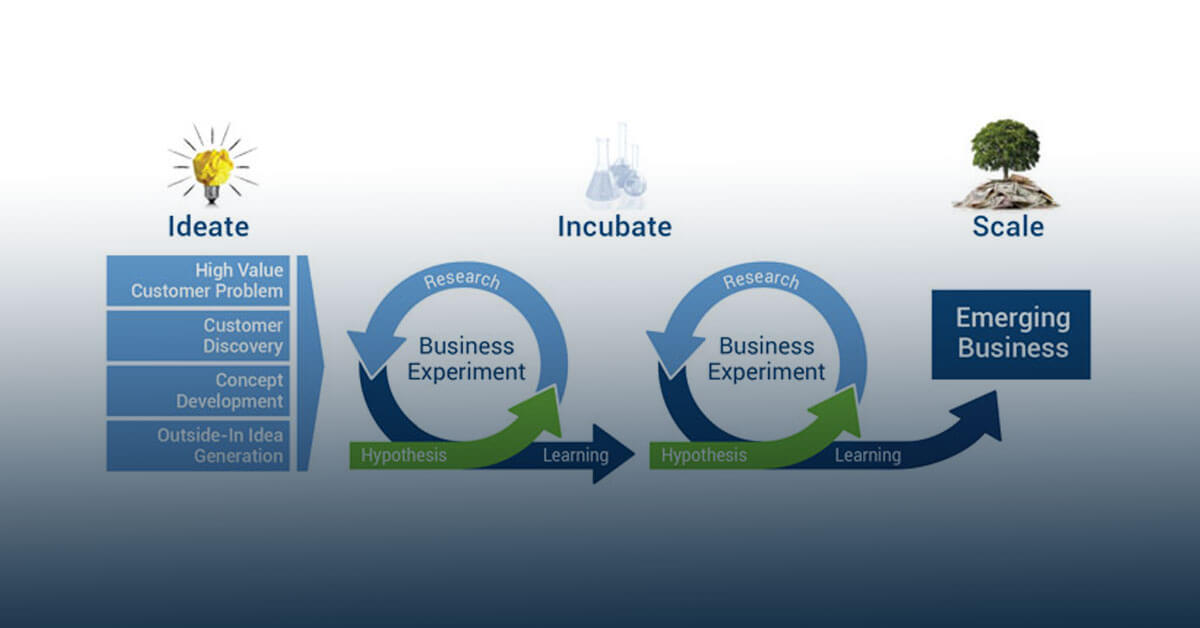One of the fondest wishes of a CEO is to create an innovation culture. They aspire to lead a vibrant organization, capable of beating the odds of disruption by learning and adapting to a changing world. They invest in innovation competitions, hackathons, ideas schemes, and similar high-participation events. They see the flood of new ideas from employees and customers that results is evidence things are changing, that innovation is happening.
Our recent survey of more than 150 companies suggests that these CEO instincts are not wrong, but they may be incomplete. Working with our founders Professor Michael Tushman from HBS and Charles O’Reilly III from Stanford, we wanted to understand what makes the difference for corporations leading disruptive innovation. We found that while getting employees involved in generating new ideas is a great way to connect them to the business, it does not help you be disruptive. There are three steps that can make this strategy more complete and improve its chances of success.
1. Define Hunting Zones for idea generation
Conventional wisdom is that innovation is a numbers game. The more good ideas you have the higher the chances of success. We found no evidence to support this. We found no correlation between quantity of ideas and success at generating new revenue streams.
Eight out of ten firms in our survey have too many or enough ideas. The more ideas you generate the more difficult it becomes to manage them. You create an Innovation Zoo, with many small ideas competing for attention, few are connected to the business strategy, and there is no commitment from senior managers to invest in converting the ideas into new revenue.
The fix is to give ideation schemes strategic boundaries within which to “hunt”. These Hunting Zones describe the sorts of problems you want to solve, the markets, or the customer segments you find most promising. Lego Ventures defined seven opportunity spaces. Tech firm Nvidia defined five end-markets in which it wanted to solve problems that nobody else could. Instead of unbridled idea generation, ideate with purpose.
2. Use professional techniques to generate ideas
Almost all the firms in our survey get new ideas from customers and employees. They know a company’s business best of all and know what you need to do to improve. The downside is that they may bias you towards incremental innovation – doing what you do today better, faster, cheaper.

The most successful corporate disruptors use employees and customers even more than the rest. But, they go beyond these sources of insight, using techniques like Design Thinking, Open Innovation, and engagement with Startups to generate ideas that challenge the status quo.

You must go beyond the obvious approaches to generating ideas. Employees and customers generate useful insights, but on their own they are not enough to help you build a new business.
3. Create an E2E approach from Ideation to Incubation to Scaling
Ideation gets all the attention, but of itself it creates no value. Good ideas still need to be validated. Incubation tests the solution’s viability and a customer’s willingness to pay for it. Even more important is Scaling, converting the idea into a meaningful revenue stream.
In our survey, firms that took an end to end approach to innovation incorporating all three disciplines significantly outperformed the rest of our sample.
They make disciplined decisions about which ideas to kill, and which ideas to fund and scale. At Corning Glass, business ideas are screened using 3 criteria: it aligns to a keystone of the business, it can generate $500M annually, and it rests on Corning’s difficult to imitate manufacturing capabilities. At Amazon, a PR FAQ process enables rapid idea review and assessment. Approved ideas are incubated via a “two pizza team,” and funded ideas are managed separately from the core (like the approach used by IBM’s Emerging Business Opportunity unit).
A more accurate title to my article is that: ideas alone is not innovation. It is what you do with ideas (new and old) that matters. Setting strategic boundaries for ideation by defining Hunting Zones, using design-thinking techniques for building outside-in customer insights, and creating an end to end to approach that places a balanced emphasis on each phase-ideation to incubation to scaling- will lead to an innovation culture that enables firms to adapt and beat the odds of disruption.
Subscribe here to download the white paper:
[av_button label=’Download the White Paper’ icon_select=’no’ icon=’ue800′ font=’entypo-fontello’ link=’manually,https://share.hsforms.com/1_MAJQgCESJm8TKstq-u44Q3h6kb’ link_target=’_blank’ size=’medium’ position=’center’ label_display=” title_attr=” color_options=” color=’theme-color’ custom_bg=’#444444′ custom_font=’#ffffff’ btn_color_bg=’theme-color’ btn_custom_bg=’#444444′ btn_color_bg_hover=’theme-color-highlight’ btn_custom_bg_hover=’#444444′ btn_color_font=’theme-color’ btn_custom_font=’#ffffff’ id=” custom_class=” av_uid=’av-35lkxi’ admin_preview_bg=”]
